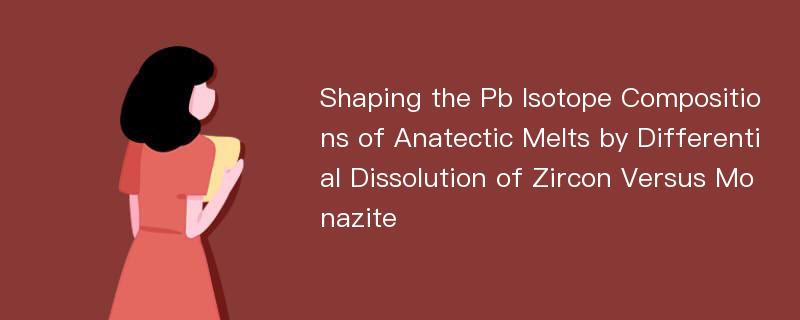
论文摘要
How the dissolution of accessory phases(e.g. zircon, monazite, and apatite) affects the radiogenic isotope(Sr, Nd, Hf, and Pb) compositions of melts derived from metasedimentary sources is one of the outstanding issues in isotope geochemistry(Watson and Harrison, 1984; Zeng et al., 2005). The MidMiocene leucogranites along the Himalayan orogenic belt are dominantly derived from fluxing-melting(Group-A) and muscovite dehydration melting(Group-B) of metasedimentary sources(Gao et al., 2017; Zeng and Gao, 2017). As compared with those in Group-B leucogranites, Group-A rocks are characterized by elevated Sr and Ba concentrations, but lower Sr as well as Hf isotope compositions. New Pb isotope data show that at similar age of crystallization, melts derived from fluxing melting are characterized by elevated 208Pb/204Pb(>39.56), and Th/U(>3.0), in contrast, dehydration melting ones by lower 208Pb/204Pb(<39.46) and Th/U(<2.0). Such a feature could be understood by considering the contrasting behavior of zircon(high U, low Th, and low Th/U and 208Pb/204Pb ratios) and monazite(low U, high Th and hence high Th/U and 208Pb/204Pb ratios). At similar P-T conditions, presence of free water enhances the dissolution of monazite and in turn elevates the melt’s Th/U and 208Pb/204Pb isotopic compositions, whereas it has minor effects on the dissolution of zircon grains during partial melting of metasedimentary rocks.
论文目录
文章来源
类型: 国际会议
作者: ZENG Lingsen,GAO Li’e
来源: 第九届世界华人地质科学研讨会 2019-06-01
年度: 2019
分类: 基础科学
专业: 地质学,地质学
单位: Key Laboratory of Deep-Earth Dynamics, Ministry of Natural Resources, Institute of Geology, Chinese Academy of Geological Sciences
分类号: P597;P575
DOI: 10.26914/c.cnkihy.2019.028414
页码: 241
总页数: 1
文件大小: 106k
下载量: 1
